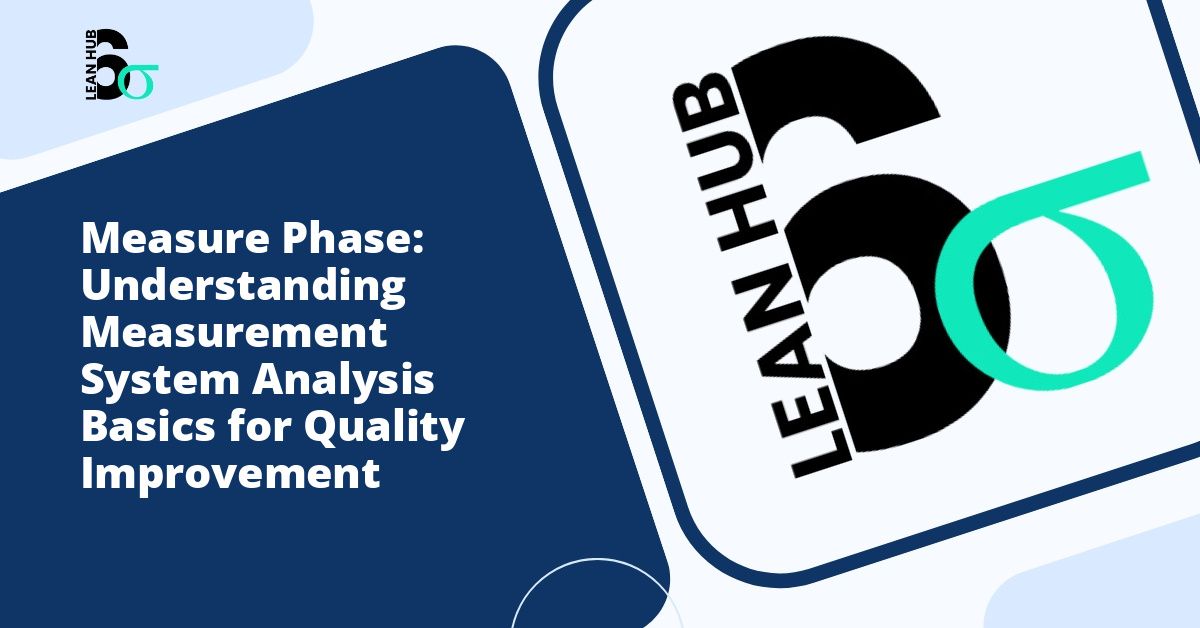The Measure phase stands as a critical juncture in any Lean Six Sigma project, bridging the gap between problem identification and analysis. After teams complete the recognize phase, where issues are identified and project scope is defined, the Measure phase demands precision, careful planning, and methodical execution. Yet, even experienced practitioners frequently encounter pitfalls that can derail their improvement initiatives before meaningful analysis begins.
Understanding these common mistakes and implementing strategies to avoid them can significantly increase your project’s success rate. This comprehensive guide examines five prevalent errors made during the Measure phase and provides actionable solutions to keep your Lean Six Sigma project on track. You might also enjoy reading about Data Collection Plan Checklist: 10 Essential Elements You Cannot Skip for Project Success.
Mistake 1: Failing to Establish a Clear Baseline
One of the most fundamental errors teams make during the Measure phase involves neglecting to establish a clear, accurate baseline of current performance. Without this foundation, comparing before-and-after results becomes impossible, making it difficult to demonstrate the value of improvement efforts. You might also enjoy reading about Lean Six Sigma Measure Phase: The Complete Guide for 2025.
Why This Happens
Organizations often rush through the Measure phase, eager to implement solutions they believe will solve their problems. The pressure to show quick results, combined with the misconception that everyone already understands current performance, leads teams to skip this crucial step. Additionally, some teams assume that anecdotal evidence or general observations suffice as baselines. You might also enjoy reading about How to Create a Data Collection Plan: Step-by-Step Guide with Templates.
How to Avoid This Mistake
Establish a comprehensive baseline by collecting sufficient data that accurately represents current state performance. This process should include:
- Defining specific metrics that align with your project goals
- Collecting data over an appropriate timeframe to account for variations
- Documenting the measurement methodology for future reference
- Validating that your baseline data is representative of typical conditions
- Creating visual representations of baseline performance for stakeholder communication
Remember that the baseline serves as your reference point throughout the entire Lean Six Sigma journey. Invest adequate time in this step to ensure accurate performance tracking.
Mistake 2: Using Inadequate or Unreliable Measurement Systems
The quality of your data depends entirely on the reliability of your measurement systems. Many teams proceed with data collection without first validating that their measurement tools and processes produce consistent, accurate results. This oversight can introduce significant errors that persist throughout the project lifecycle.
The Impact of Poor Measurement Systems
When measurement systems lack reliability, the data collected becomes questionable. Teams may identify problems where none exist or miss critical issues entirely. Furthermore, improvements may appear successful when they are not, or genuine improvements may go unrecognized due to measurement noise.
How to Avoid This Mistake
Conduct a thorough Measurement System Analysis (MSA) before collecting data for your project. This analysis should evaluate:
- Accuracy: Does the measurement system produce results close to the true value?
- Precision: Does the system produce consistent results when measuring the same item repeatedly?
- Stability: Does the system maintain consistent performance over time?
- Linearity: Does the system perform consistently across the full range of measurements?
- Resolution: Can the system detect meaningful changes in the process?
Address any issues discovered during the MSA before proceeding with full-scale data collection. This upfront investment prevents wasted effort analyzing flawed data.
Mistake 3: Collecting Insufficient or Inappropriate Data
After completing the recognize phase and moving into measurement, teams sometimes collect data that fails to adequately represent the process or problem under investigation. This mistake manifests in various forms: collecting too little data, gathering data from unrepresentative conditions, or measuring the wrong variables entirely.
Common Data Collection Errors
Insufficient sample sizes lead to unreliable conclusions. Collecting data only during convenient times may miss important variations. Focusing exclusively on outputs while ignoring process inputs prevents understanding cause-and-effect relationships. Each of these errors compromises the entire Lean Six Sigma project.
How to Avoid This Mistake
Develop a comprehensive data collection plan before gathering any information. Your plan should specify:
- What data will be collected and why each metric matters
- Where and when data collection will occur to capture representative conditions
- Who will collect the data and what training they require
- How much data is needed to achieve statistical significance
- What format will be used to record and store data
- How data quality will be verified during collection
Consider process inputs, outputs, and intermediate measures. Include stratification factors that might influence results, such as time of day, operator, equipment, or material lot. Statistical software can help determine appropriate sample sizes based on your desired confidence levels.
Mistake 4: Neglecting Operational Definitions
Ambiguous terminology creates confusion and inconsistency during data collection. When team members interpret measurement criteria differently, the resulting data lacks uniformity and reliability. This problem often goes undetected until analysis reveals inexplicable variations or contradictions.
The Consequences of Vague Definitions
Without clear operational definitions, subjective judgments replace objective measurements. One person’s “defect” becomes another person’s “acceptable variation.” Data collectors may change their interpretation over time, introducing trends that reflect changing definitions rather than actual process changes. These issues undermine the entire Lean Six Sigma methodology.
How to Avoid This Mistake
Create precise operational definitions for every metric in your project. An effective operational definition includes:
- A clear description of what is being measured
- The specific criteria that must be met
- The measurement method and tools to be used
- Examples of what qualifies and what does not
- Visual aids, templates, or standards for reference
Test your operational definitions by having multiple people independently evaluate the same items. If their assessments align consistently, your definitions are sufficiently clear. If disagreements occur, refine the definitions until consistency is achieved.
Mistake 5: Overlooking Process Capability Assessment
The Measure phase should include an assessment of current process capability relative to customer requirements or specifications. Many teams skip this analysis, moving directly to root cause investigation without understanding whether their process can theoretically meet requirements even under ideal conditions.
Why Process Capability Matters
Process capability analysis reveals whether problems stem from excessive variation, a shifted process mean, or both. This understanding guides improvement priorities and helps set realistic goals. Without capability assessment, teams may pursue improvement strategies that cannot deliver the required results, regardless of how well they are implemented.
How to Avoid This Mistake
Conduct a thorough process capability study during the Measure phase. This analysis should include:
- Verification that the process is stable and in statistical control
- Calculation of capability indices (Cp, Cpk, Pp, Ppk) as appropriate
- Comparison of current capability to customer requirements
- Identification of whether centering or variation reduction is the priority
- Documentation of the gap between current and required performance
If capability analysis reveals that the process cannot meet requirements even when perfectly centered with minimum variation, fundamental process redesign may be necessary rather than incremental improvement.
Integrating Lessons Learned into Your Lean Six Sigma Practice
Avoiding these five common mistakes requires discipline, planning, and a commitment to methodological rigor. The Measure phase demands patience and attention to detail, qualities that can feel at odds with organizational pressure for rapid results. However, the time invested in proper measurement pays dividends throughout the remaining project phases.
Teams that establish clear baselines, validate their measurement systems, collect appropriate data, define terms precisely, and assess process capability position themselves for success. These practices transform the Measure phase from a potential stumbling block into a solid foundation for effective analysis and sustainable improvement.
As you progress from the recognize phase through measurement and into analysis, remember that quality data enables quality decisions. The insights gained from proper measurement guide improvement priorities, justify resource allocation, and ultimately demonstrate the value delivered by your Lean Six Sigma initiatives.
By recognizing these common pitfalls and implementing the suggested preventive measures, you can significantly enhance your project outcomes and build organizational capability in process improvement methodology. The discipline developed during the Measure phase establishes patterns of rigor and thoroughness that benefit every subsequent phase of your Lean Six Sigma journey.








